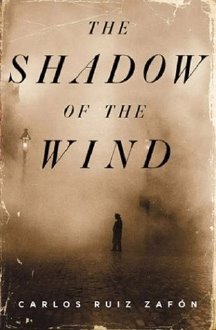Stars and stripes everywhere, of course, and white pillars, like those identifying the big white house that is impossible to approach, even to reach the stipulated distance.

Monuments, memorials. Grand Lincoln on his marble throne taking me back to grade school where I had to memorize the Gettysburg Address. The sound of the words returns to me as I stand reading the text here, and the next day at the stunning Library of Congress, the Jefferson Building, where Lincoln's neat handwriting is on display, behind glass.
Heading south, this is a good start. "Now we are engaged in a great civil war." It is a war identified by many names. Most commonly known as the civil war, the further south I get, it is called the War between the States (Fort Macon), or the war of Northern Aggression (Savannah). Here in the capital of the nation, however, the emphasis is on the triumph of having kept the states under one flag, and what a splendid capital it is. The looming neo-classical buildings, the hum of argument that must be going on inside the hotels, and the office buildings as people try to persuade one other to cooperate or resist. Still a kind of civil war. In the news I hear about a broken congress, or broken government, but outside everything is beautiful; bright sunny days, brisk autumn winds, wonderful fall colours, red and gold being the coin of the season. With my personal guide to steer me to the best places, including the brilliant café at the Museum of the American Indian, which offers such native foods as alligator and blue corn bread, I pass through Washington without having been touched much. Only security everywhere and the bollards that go up, preventing access to any kind of close up view of the White House, only those things rouse the anger I used to feel at policies that seemed a joke in this so-called land of liberty.
I left the country to protest all that transpired during the Vietnam War and the inspired design of the memorial to that war amazes me for how it evokes the darkness of that time. We walk along the path beside the black marble bearing the names of all those poor soldiers sacrificed for something abstract and absurd as the domino theory and are literally overwhelmed by its shadow, even my tall friend Jimmy.
On my last morning I try once again to glimpse the White House, and it is a perfect day to walk the length of Pennsylvania Avenue, but no luck. I am stopped a block away, and so head back to Union Station, but by a side street that takes me to Ford's Theatre and the house where Lincoln died. Relics of history everywhere, and of conflicts that have morphed into different forms. Beneath its gleaming white beauty, the bones of Washington rattle.

Monuments, memorials. Grand Lincoln on his marble throne taking me back to grade school where I had to memorize the Gettysburg Address. The sound of the words returns to me as I stand reading the text here, and the next day at the stunning Library of Congress, the Jefferson Building, where Lincoln's neat handwriting is on display, behind glass.
Heading south, this is a good start. "Now we are engaged in a great civil war." It is a war identified by many names. Most commonly known as the civil war, the further south I get, it is called the War between the States (Fort Macon), or the war of Northern Aggression (Savannah). Here in the capital of the nation, however, the emphasis is on the triumph of having kept the states under one flag, and what a splendid capital it is. The looming neo-classical buildings, the hum of argument that must be going on inside the hotels, and the office buildings as people try to persuade one other to cooperate or resist. Still a kind of civil war. In the news I hear about a broken congress, or broken government, but outside everything is beautiful; bright sunny days, brisk autumn winds, wonderful fall colours, red and gold being the coin of the season. With my personal guide to steer me to the best places, including the brilliant café at the Museum of the American Indian, which offers such native foods as alligator and blue corn bread, I pass through Washington without having been touched much. Only security everywhere and the bollards that go up, preventing access to any kind of close up view of the White House, only those things rouse the anger I used to feel at policies that seemed a joke in this so-called land of liberty.
I left the country to protest all that transpired during the Vietnam War and the inspired design of the memorial to that war amazes me for how it evokes the darkness of that time. We walk along the path beside the black marble bearing the names of all those poor soldiers sacrificed for something abstract and absurd as the domino theory and are literally overwhelmed by its shadow, even my tall friend Jimmy.
On my last morning I try once again to glimpse the White House, and it is a perfect day to walk the length of Pennsylvania Avenue, but no luck. I am stopped a block away, and so head back to Union Station, but by a side street that takes me to Ford's Theatre and the house where Lincoln died. Relics of history everywhere, and of conflicts that have morphed into different forms. Beneath its gleaming white beauty, the bones of Washington rattle.



